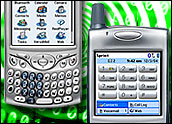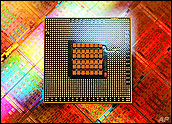
Back in the good old days of 2005, most American youngsters didn’t start fiddling with electronic gadgets until they were about eight years old. Now, six-year-olds know how to use cell phones, DVD players and just about anything else with an “on” button.
Such are the findings of the NPD Group, a research firm that’s been keeping tabs on the penetration of consumer electronics in kids’ lives. The company’s latest report indicates the average age at which children begin using consumer electronic devices is now 6.7 years old. When NPD conducted a similar survey in 2005, that average was 8.1 years old.
“On average, children begin using electronic devices at approximately seven years of age, with televisions and desktop computers showing the youngest initial exposure (about four or five years of age), and satellite radios and portable digital media players (PDMP) showing the oldest (about nine years of age),” found the researchers.
The Younger Americans
Cell phones and DVD players top the list of devices that are being used by children at the earliest age, NPD said, but it noted “virtually all of the various electronic devices register a decline in average age that the initial use occurs.”
Information for the report was collected in a nationwide online survey of adults 25 and older who had children aged four to 14 in the household. To qualify, the kids had to use at least one consumer electronic device measured in the study, which took place between March 16 and 22.
The survey found children use non-portable televisions just under six days per week. They spend time about four days each week using cell phones and digital video recorders, according to NPD.
“Kids are drawn to the latest and greatest digital devices just as their parents are,” said a NPD’s Anita Frazier. “They appear to have no fear of technology and adopt it easily and without fanfare, making these devices a part of their everyday lives.”
Their Very Own
Just because the ages of children using consumer electronics is decreasing doesn’t mean people are buying more devices, said NPD. The average number of electronic devices owned and used by youngsters decreased slightly compared to last year and 2005, the firm said. “Moreover, close to 25 percent of households surveyed claimed to have made no electronics purchases during the past 12 months,” noted NPD.
That trend might be true for devices considered to be owned by adults in a household. However, NPD found an increase in the number of gadgets the kids call their own. Their ownership of personal digital music players, portable video games and digital cameras “exhibits the largest increases of the categories studied, with cell phones and portable DVD players also showing growth,” says the study.
Children are less interested in the newest devices, such as TV-to-computer video units and satellite radios. Nor are they big on yesterday’s hot items, such as film cameras and karaoke systems, said NPD. Among the devices cited the most as being purchased during the past year are cell phones, digital cameras and personal digital music players.
The market for kid versions of electronic products is growing, and children are using these devices “at a younger age and more frequently,” said NPD. Nevertheless, “with the exception of video games, the adult versions of electronics show higher penetration than do the children’s version of the same product,” the research found.
While kids may be using high-tech toys earlier, there is still room in their lives for traditional playthings, asserted Marianne Szymanski, president and founder of Toy Tips.
“Kids and electronics has been hyped a lot over the years,” she told TechNewsWorld. “However, we have not found in our research that younger children enjoy electronic learning toys as much as they do clay, board games, dress up, action figures, stuffed animals and other traditional toys that assist in developmental learning. Some electronic learning toys are great for younger children when the parent plays with the child and contributes to the learning process.”
Part of the Environment
The study’s findings don’t surprise Rob Enderle, principal analyst with the Enderle Group.
“That has been a consistent trend … over time, particularly with cell phones,” said Enderle. He said parents are often giving, or lending, cell phones to their children so they can keep in touch.
While he agreed the decreasing age of gadget users can be partially attributed to better, more intuitive design of the machines, Enderle figured a more important reason is the sheer ubiquity of consumer electronics these days.
“Kids have been seeing it since they were one or two years old,” he said. “By the time they get to be six they’re old hat. It becomes part of the initial learning experience, and from the ages of two to five, the rate of learning is incredibly high. … They take to it naturally by seeing their parents do it and learning by observation.”
Modern American children, Enderle noted, are “not frightened and not intimidated” by even some rather complicated gizmos. “In a lot of homes, it is the young child that is the expert, who is able to use the device more capably than the parents,” he commented.





















































